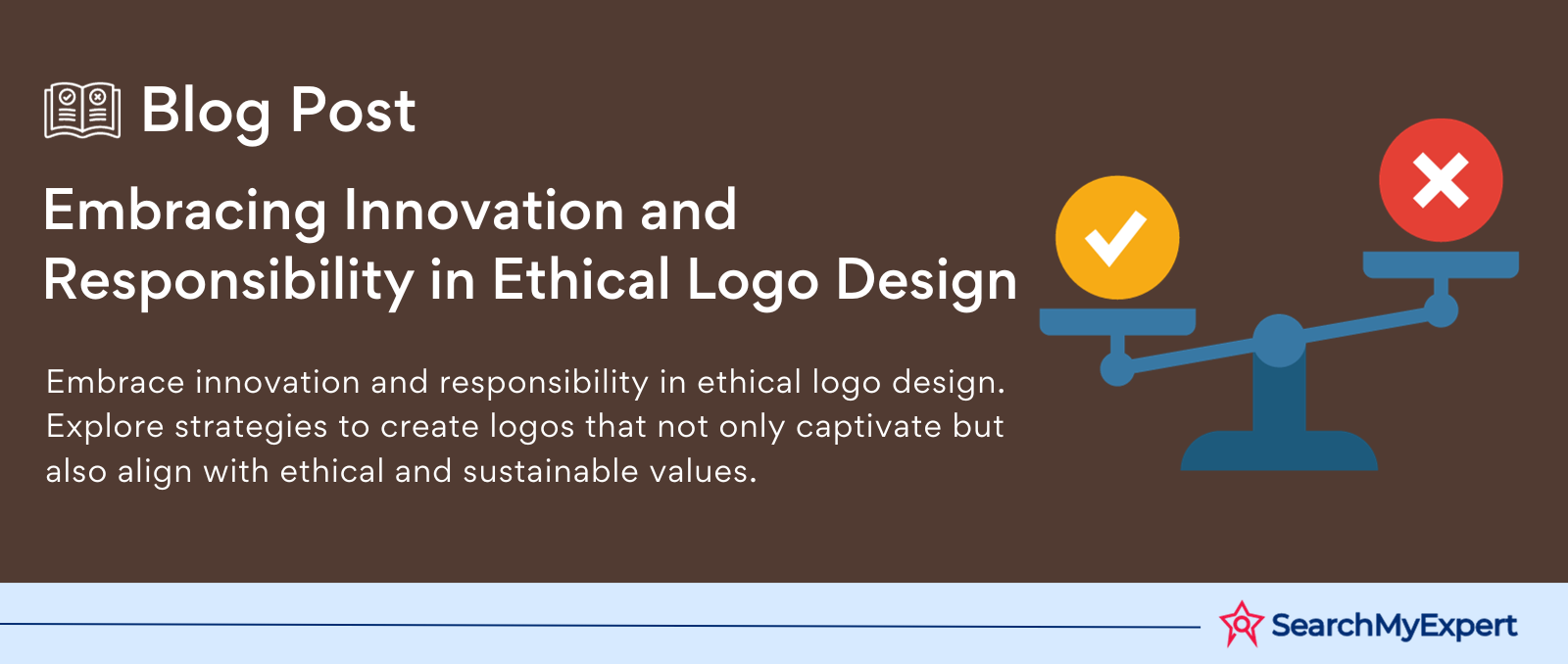Embracing Innovation and Responsibility in Ethical Logo Design

Ethical Considerations in Logo Design: An Introduction
The Power of Logos in Branding
Logos are more than just visual symbols; they are the heart of a brand's identity. They hold the power to evoke emotions, convey values, and establish recognition in a crowded marketplace. In the world of branding, a logo is not just an artistic creation; it's a strategic tool that communicates the essence of a brand to its audience.
Ethical Awareness in Design
Recently, there's been a significant shift in how we approach design, with a growing emphasis on ethical considerations. This evolution reflects a broader societal trend towards greater social responsibility and sustainability. In design, ethics encompass a range of issues, from environmental impact to cultural sensitivity and inclusivity.
Purpose of the Presentation
In this presentation, we'll delve into the world of logos through the lens of ethics. We'll explore how ethical considerations shape logo design, ensuring that these powerful symbols resonate with audiences in a responsible and meaningful way. By understanding the ethical dimensions of logo design, we can create brands that not only stand out but also stand for something positive in our ever-changing world.
Avoiding Cultural Appropriation in Logo Design
Defining Cultural Appropriation
Cultural appropriation, in the context of design, refers to the adoption or use of elements from one culture by members of another culture, especially when this adoption occurs without understanding, respect, or acknowledgment. This practice can lead to harmful stereotypes, misrepresentations, and the undermining of the original cultural significance.
The Pitfalls of Cultural Appropriation in Logos
There have been instances where logos faced criticism for cultural appropriation. For example, sports team logos that use indigenous symbols or caricatures often attract controversy. These logos can perpetuate stereotypes and disrespect the cultural heritage they aim to represent.
Navigating Cultural Sensitivity in Logo Design
To avoid cultural appropriation, designers should:
- Research Thoroughly: Understand the cultural significance of symbols before using them.
- Seek Consultation: Engage with representatives of the culture to gain insights.
- Embrace Authentic Collaboration: Work with artists or consultants from the culture to ensure respectful representation.
- Focus on Appreciation, Not Appropriation: Celebrate cultural elements respectfully and in context.
- Be Open to Feedback: Be willing to adapt designs in response to cultural sensitivities.
By navigating these considerations, logo designers can create work that is both innovative and respectful, honoring cultural diversity without appropriating it.
Ensuring Accessibility and Inclusivity in Logo Design
The Imperative of Accessible Logos
Logo accessibility is crucial for inclusivity, ensuring that people with disabilities, such as visual impairments, can perceive, understand, and engage with a brand. An accessible logo transcends visual aesthetics, becoming a symbol that is inclusive and considerate of diverse audiences.
Addressing Accessibility in Logos
Common issues in logo design that can hinder accessibility include:
- Complexity: Overly intricate designs can be difficult to discern, especially for those with visual impairments.
- Color Contrast: Insufficient contrast between the logo and its background can reduce visibility.
- Scalability: Logos must maintain clarity and recognition at various sizes.
- Alternative Text: Providing descriptive text for logos ensures screen readers can convey the logo's essence to visually impaired users.
Strategies for Avoidance:
- Simplicity in Design: Opt for clean, uncomplicated designs.
- High Contrast Colors: Ensure logos are easily distinguishable.
- Scalable Design: Test logo clarity at different scales.
- Incorporate Alt Text: Provide clear, descriptive alternative text for digital logos.
Prioritizing Inclusivity
Inclusivity goes beyond physical accessibility. It involves avoiding imagery that might be offensive or discriminatory. This requires a deep understanding of various cultures, sensitivities, and the evolving societal landscape. By prioritizing inclusivity, designers can create logos that resonate positively with a broader audience, fostering a brand image that is both respectful and embracing of diversity.
Transparency and Originality in Logo Design
The Value of Transparency in Design
Transparency in the logo design process is crucial. It builds trust, ensuring that clients understand every stage of the creative journey. This openness is key to maintaining ethical integrity and fostering a healthy client-designer relationship.
Tackling Plagiarism and Copyright Infringement
In the digital age, the risks of plagiarism and copyright infringement are heightened. Designers must be vigilant to avoid unintentionally replicating existing designs, which can lead to legal issues and tarnish both the designer's and the client's reputations.
Championing Originality
Originality is the cornerstone of impactful logo design. Authentic logos:
- Tell a Unique Story: They encapsulate a brand's unique identity and ethos.
- Set Brands Apart: Original logos help brands stand out in a competitive market.
- Build Brand Loyalty: Unique designs resonate more deeply with audiences, fostering a stronger connection.
How Designers Can Ensure Originality:
- Research Extensively: Avoid accidental imitation by being aware of existing designs.
- Seek Inspiration, Not Imitation: Use inspiration as a springboard for original ideas.
- Engage in Creative Experimentation: Explore a wide range of concepts and styles.
- Practice Ethical Design: Respect intellectual property and strive for authenticity.
By embracing transparency and originality, designers not only adhere to ethical standards but also contribute to the creation of distinctive, memorable brand identities.
Environmental Sustainability in Logo Design
Assessing the Environmental Impact
Logo design, often seen as a purely digital art, surprisingly has a tangible environmental impact. This impact is primarily seen in the production and distribution of branded materials, from business cards to packaging. The choice of materials and production methods can significantly affect a brand's ecological footprint.
Adopting Sustainable Practices
Logo designers play a key role in promoting environmental sustainability. By making conscious choices in their designs, they can influence the overall sustainability of a brand's physical presence.
Practices for Sustainability:
- Simplicity in Design: Simplified logos require less ink and are more versatile across mediums.
- Eco-Friendly Color Choices: Some pigments are more environmentally harmful than others.
- Digital-First Approach: Prioritize digital formats to reduce material usage.
- Collaboration with Eco-Friendly Suppliers: Partner with printers and manufacturers who use sustainable practices.
Encouraging Eco-Friendly Materials and Methods
The choice of materials and methods is crucial. Designers should advocate for:
- Recycled or Sustainable Materials: Use paper and materials from sustainable sources.
- Eco-Friendly Inks and Print Processes: Opt for soy or vegetable-based inks and energy-efficient printing methods.
- Digital Distribution: Whenever possible, choose digital over physical distribution to reduce waste.
By integrating these sustainable practices, logo designers not only reduce environmental impact but also help brands resonate with increasingly eco-conscious consumers.
Client Responsibility and Collaboration in Logo Design
Ethical Responsibility of Clients
In the logo design process, clients hold a significant ethical responsibility. This responsibility encompasses respecting the creative process, acknowledging intellectual property rights, and ensuring that their demands do not lead to unethical design practices.
The Power of Collaboration
Effective collaboration between clients and designers is key to creating a successful logo. It involves:
- Open Communication: Frequent and honest dialogue helps align visions and expectations.
- Mutual Respect: Acknowledging each other's expertise and contributions fosters a positive working relationship.
- Constructive Feedback: Feedback should be specific, actionable, and respectful.
Setting Clear Expectations
Clear expectations are crucial for a smooth design process. Clients should:
- Provide Detailed Briefs: Offer comprehensive information about the brand, target audience, and design preferences.
- Understand the Design Process: Appreciate the time, effort, and creativity involved.
- Respect Timelines and Budgets: Recognize the resources required for quality design work.
Respecting Intellectual Property
Clients must respect the intellectual property of the designer and avoid pushing for derivative or plagiarized work. This respect is fundamental to maintaining the integrity of the design process and the final product.
Embracing Ethical Practices in Logo Design
Summarizing Key Ethical Considerations
The ethical landscape of logo design is multifaceted, encompassing:
- Avoidance of Cultural Appropriation: Respecting cultural identities and avoiding misappropriation.
- Accessibility and Inclusivity: Designing logos that are accessible to all, including people with disabilities, and avoiding offensive imagery.
- Transparency and Originality: Upholding honesty in the design process and avoiding plagiarism.
- Environmental Sustainability: Considering the ecological impact of logo design and adopting sustainable practices.
- Client Responsibility and Collaboration: Emphasizing the ethical role of clients in the design process and fostering effective collaboration.
A Call to Action
This presentation calls for a collective effort from both designers and clients to prioritize these ethical considerations. Designers are encouraged to be pioneers of change, advocating for responsible practices in every aspect of their work. Clients, on their part, must recognize their role in fostering ethical design processes.
Looking Towards a Bright Future
There is a growing recognition of the importance of ethical practices in logo design. This shift presents an opportunity for the industry to evolve, paving the way for a future where logo design is not only visually compelling but also ethically sound and socially responsible.
Conclusion
This exploration of ethical considerations in logo design underscores the importance of cultural sensitivity, accessibility, originality, environmental sustainability, and collaborative responsibility. It's a call to action for both designers and clients to embrace these ethical practices, fostering a future where logo design not only captivates visually but also aligns with our evolving societal values.
Elevate your branding with Logo Design Companies.
share this page if you liked it 😊
Other Related Blogs

Mastering Docker for App Development: A Comprehensive Guide to Benefits, Use-Cases, and Alternatives
STAY UP TO DATE
GET PATH'S LATEST
Receive bi-weekly updates from the SME, and get a heads up on upcoming events.
Contact Us











